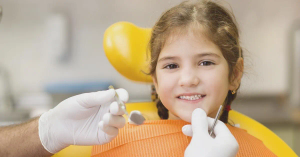Bioprinting, an advanced branch of 3D printing, is poised to revolutionize the field of dentistry. This cutting-edge technology involves using bio-materials, including cells, to create tissue-like structures. While still in its infancy in many respects, bioprinting holds immense promise for various dental applications such as tooth regeneration, gum tissue repair, and even full jawbone reconstructions. The future of bioprinting in dentistry could not only enhance patient care but also minimize the need for traditional implants and reduce recovery times.
What is Bioprinting?
Bioprinting involves layer-by-layer fabrication of structures using living cells and biomaterials to create tissue that mimics the body’s natural composition. In dentistry, this process could enable dentists to replace damaged tissues or even regrow missing teeth using patients' own cells.
Unlike traditional 3D printing, which uses non-living materials like resins or metals, bioprinting introduces a new frontier by utilizing living cells. This technology can create complex biological structures, offering the potential for more personalized and effective dental care.
Applications of Bioprinting in Dentistry
The use of bioprinting in dentistry could revolutionize several key areas, including:
- Tooth Regeneration: One of the most exciting prospects of bioprinting is its potential to regenerate lost or damaged teeth. Current methods like implants rely on synthetic materials, but bioprinting could eventually lead to fully biological tooth replacements that integrate seamlessly with the patient’s jawbone and gum tissue.
- Gum Tissue Repair: Gum disease is one of the leading causes of tooth loss, and conventional treatments often involve invasive surgeries. Bioprinting could pave the way for creating gum tissue using a patient’s own cells, reducing the need for grafts and lowering the risk of rejection.
- Bone Regeneration: For patients suffering from jawbone loss, which often results from trauma or disease, bioprinting could offer new avenues for bone regeneration. By printing bone-like scaffolds infused with stem cells, dentists could help patients regain lost bone structure, improving the success rate of implants.
Benefits of Bioprinting in Dentistry
- Personalized Treatment: Since bioprinting can use a patient’s own cells, the treatment is highly personalized. This minimizes rejection and enhances recovery.
- Minimally Invasive: Bioprinting holds the potential to reduce the need for invasive surgeries, offering a faster, more efficient treatment option.
- Sustainability and Accessibility: In the future, bioprinting may reduce the need for synthetic materials and streamline the production of dental restorations, potentially making complex treatments more accessible and affordable for patients.
Challenges and Limitations
While bioprinting is promising, several challenges remain before it becomes a mainstream dental practice:
- Technical Complexity: Creating biological structures that mimic the function and durability of natural tissues is a highly complex process. Further research is needed to ensure that bioprinted tissues can withstand the forces involved in chewing and other oral activities.
- Regulatory Hurdles: The approval process for bioprinted tissues could be lengthy, as it involves meeting strict safety and efficacy standards.
- Cost: Currently, bioprinting technology is expensive, and widespread use may take years to become cost-effective for routine dental treatments.
Conclusion
The future of bioprinting in dentistry is both exciting and transformative. As research progresses, this technology has the potential to reshape how we approach oral care, offering more natural, personalized, and less invasive treatments. While challenges remain, the possibilities of bioprinting—from regenerating teeth to repairing gum and bone tissue—are limitless. As it advances, bioprinting will undoubtedly become a key component in the future of dental medicine, enhancing both patient outcomes and the standard of care.








